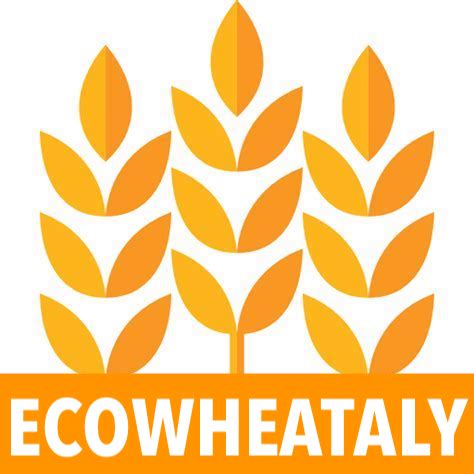Soil is the living skin of the planet. Within just a few centimeters beneath our feet lies the foundation of every agricultural ecosystem — the place where wheat takes root, water infiltrates, and billions of microorganisms build a fragile but vital equilibrium.
Yet that balance is increasingly at risk. According to the FAO, 33% of the world’s soils are degraded, and more than 24 billion tons of fertile soil disappear every year.
Wheat, which depends entirely on this thin layer of life, is both a victim and a guardian of soil health.
What “Soil Health” Really Means
Healthy soil is much more than “good dirt.” It’s a living system rich in organic matter, microorganisms, earthworms, and beneficial fungi.
Soil organic matter (sometimes called soil organic carbon) determines fertility and structure. It acts like a sponge — holding water, reducing erosion, and storing carbon, thus helping to mitigate climate change.
When soil is over-tilled, compacted by heavy machinery, or depleted by unbalanced fertilization, it loses that structure.
Water runs off instead of soaking in, microbial life declines, and fertility collapses. This process is known as soil degradation — and it’s one of agriculture’s greatest hidden crises.
Wheat and Soil: A Millennia-Long Relationship
Wheat has been part of human agriculture since the dawn of civilization. But this long relationship has also left scars.
Intensive farming practices — deep plowing, heavy use of synthetic fertilizers and pesticides — have eroded the natural fertility of many cereal-producing soils.
In Italy, regions such as Puglia, Sicily, and Lazio show clear signs of erosion and loss of organic carbon.
A 2023 study by CREA found that the average organic carbon content in Italian cereal soils has dropped below 2%, the critical threshold for maintaining biological fertility.
Erosion and Compaction: The Invisible Enemies
Two processes threaten cereal soils most directly:
- Erosion: rainfall and wind wash away the upper soil layer — the richest in nutrients and microorganisms. Without vegetation cover, land becomes sterile and arid.
- Compaction: heavy machinery compresses the soil, reducing air space and water infiltration. Roots struggle to grow, and water stagnates or evaporates quickly.
According to the European Environment Agency (EEA), about 25% of European farmland shows signs of compaction — a risk particularly high in cereal systems due to annual soil tillage.
Regenerative Practices That Make a Difference
In recent years, many farmers have turned to regenerative agriculture, an approach that aims to restore soil vitality rather than simply maintain yields.
Some of the most effective practices for wheat include:
- Minimum tillage: reducing deep plowing preserves soil structure and microbial activity.
- Cover crops: planted between harvests, they protect the soil from erosion and add nutrients.
- Crop rotation: alternating wheat with legumes (such as fava beans or chickpeas) naturally replenishes nitrogen and breaks pest cycles.
- Organic residue management: leaving part of the straw and stalks in the field feeds soil life and increases organic matter.
Pilot projects in Emilia-Romagna and Basilicata have shown that these methods can increase soil water retention capacity by up to 30%, while reducing fertilizer needs.
Wheat’s Role in Carbon Sequestration
Healthy soils are not only more productive — they are also climate allies.
Through photosynthesis, wheat plants absorb carbon dioxide (CO₂) from the atmosphere and transfer part of it to their roots. A portion of this carbon remains stored in the soil as organic matter.
This process, called carbon sequestration, helps offset greenhouse gas emissions.
FAO estimates that better soil management in cereal systems could store up to 0.5 tons of CO₂ per hectare per year, making wheat fields an important piece of the climate solution.
Soil and Policy: The New Sustainability Frontier
The EU Soil Strategy for 2030 and the proposed Soil Monitoring Law (2023) place soil health at the center of European environmental policy, with goals for restoration and sustainable management across all farmland.
The new Common Agricultural Policy (CAP) also includes measures promoting conservation agriculture and integrated residue management.
For EcoWheataly, these frameworks are a concrete opportunity: by using data and sustainability indicators, the project can measure how different wheat cultivation practices impact soil health, fertility, and carbon balance across Italy.
Rebuilding an Ancient Alliance
Wheat is born from the soil — and it can help heal it.
Every agronomic choice — from seed selection to residue management — can contribute to restoring this ancient bond between plant and earth.
In an age of climate uncertainty and desertification, giving life back to the land is not just an agricultural act: it’s a gesture of hope.
As the FAO reminds us, “There can be no food security without healthy soils.”
And wheat, once again, may be the key to keeping that promise.
Sources:
- FAO (2022). Global Assessment of Soil Degradation and Restoration Needs.
- FAO (2023). State of the World’s Soil Resources Report.
- EEA – European Environment Agency (2023). Soil Compaction and Erosion in European Farmlands.
- CREA – Research Centre for Agriculture and Environment (2023). Soil Organic Matter Balance in Italian Cereal Fields.
- IPCC (2021). Climate Change and Land: Summary for Policymakers.
- European Commission (2023). EU Soil Strategy for 2030 and Soil Monitoring Law Proposal.

